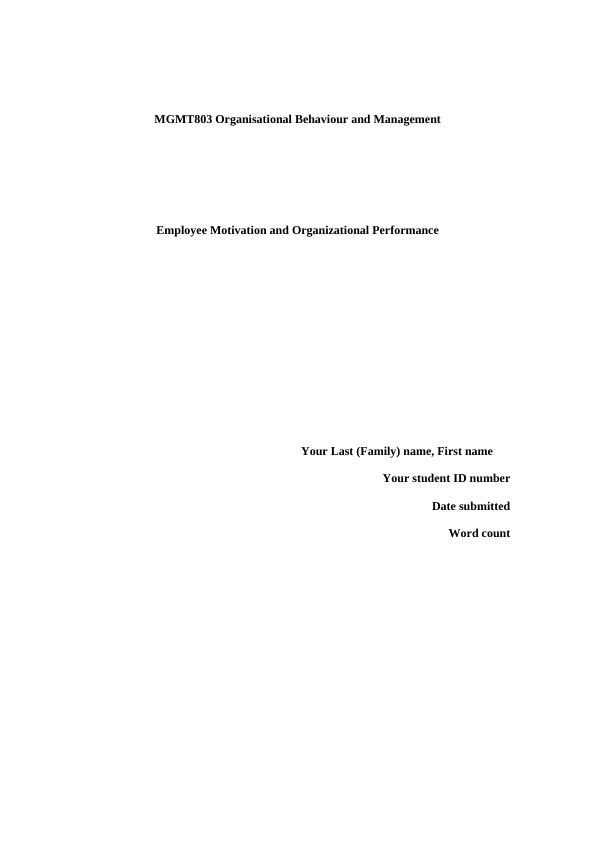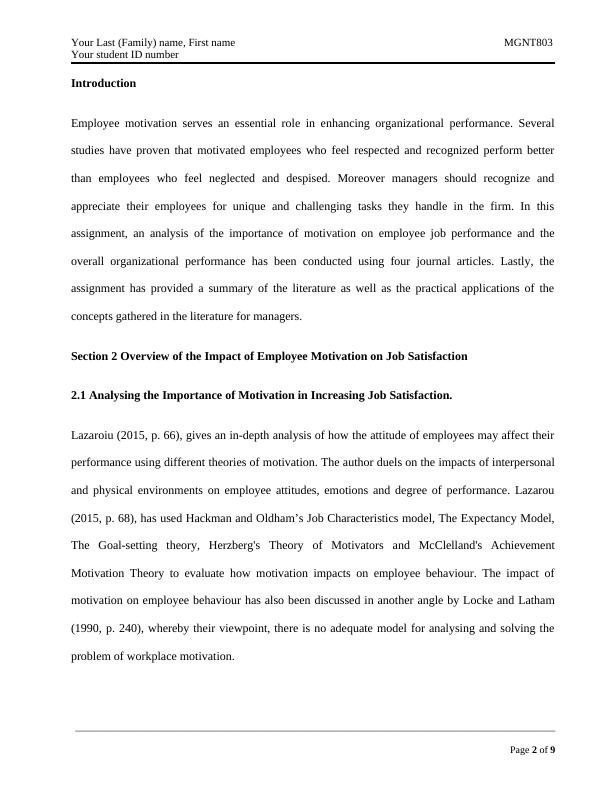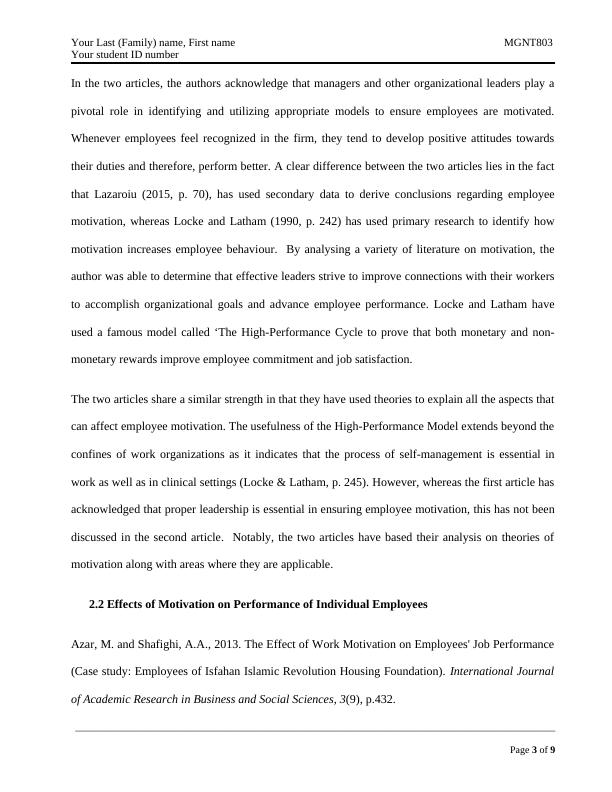Employee Motivation and Organizational Performance
Students are required to critically review two additional journal articles and compare and contrast them with the articles reviewed in Assessment 3.
9 Pages2544 Words228 Views
Added on 2023-06-04
About This Document
This assignment analyses the importance of employee motivation on job performance and organizational performance through an analysis of four journal articles. It discusses the impact of motivation on employee behaviour and the effects of motivation on the performance of individual employees and the overall performance of the organization. The assignment provides practical implications for managers and highlights the importance of intrinsic and extrinsic motivation.
Employee Motivation and Organizational Performance
Students are required to critically review two additional journal articles and compare and contrast them with the articles reviewed in Assessment 3.
Added on 2023-06-04
ShareRelated Documents
End of preview
Want to access all the pages? Upload your documents or become a member.
Importance of Motivation in Organizational Behavior
|6
|1228
|415
Work Motivation and Organizational Behaviour
|5
|1052
|347
Employee Motivation and Job Performance
|9
|2728
|480
Motivating People in Organization: A Critical Analysis of Lazaroiu's Articles
|4
|1082
|434
Attitudes and Job Satisfaction (pdf)
|15
|4169
|26
An Organisational Behaviour Approach to Management
|13
|2727
|321



